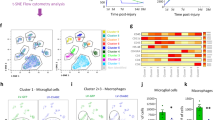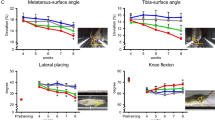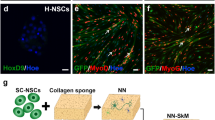Abstract
Chronic unilateral hemisection (HX) of the adult rat spinal cord diminishes conduction through intact fibers in the ventrolateral funiculus (VLF) contralateral to HX. Intraspinal injections of Chondroitinase-ABC, known to digest chondroitin sulfate proteoglycans (CSPGs) in the vicinity of injury, prevented this decline of axonal conduction. This was associated with improved locomotor function. We further injected three purified CSPGs into the lateral column of the uninjured cord at T10: NG2 and neurocan, which increase in the vicinity of a spinal injury, and aggrecan, which decreases. Intraspinal injection of NG2 acutely depressed axonal conduction through the injection region in a dose dependent manner. Similar injections of saline, aggrecan, or neurocan had no significant effect. These results identify a novel acute action of CSPGs on axonal conduction in spinal cord, and suggest that antagonism of proteoglycans reverses or prevents the decline of axonal conduction, in addition to stimulating axonal growth.
Similar content being viewed by others
Article PDF
Author information
Authors and Affiliations
Corresponding author
Rights and permissions
About this article
Cite this article
Hunanyan, A., Garcia-Alias, G., Levine, J. et al. Role of chondroitin sulfate proteoglycans (CSPGs) in synaptic plasticity and neurotransmission in mammalian spinal cord.. Nat Prec (2009). https://doi.org/10.1038/npre.2009.3681.1
Received:
Accepted:
Published:
DOI: https://doi.org/10.1038/npre.2009.3681.1



